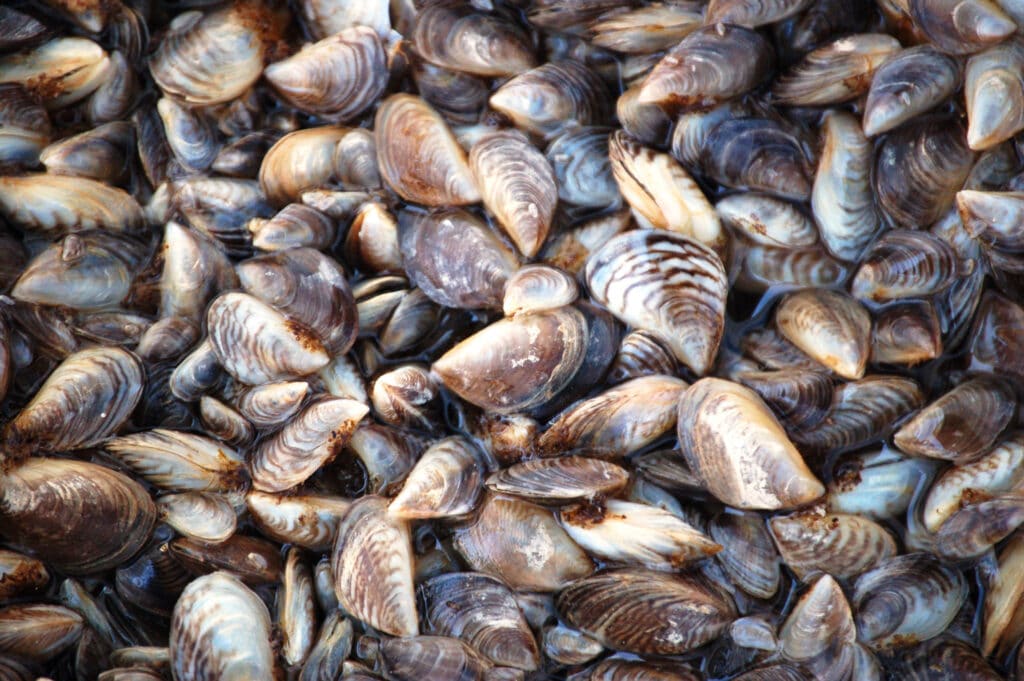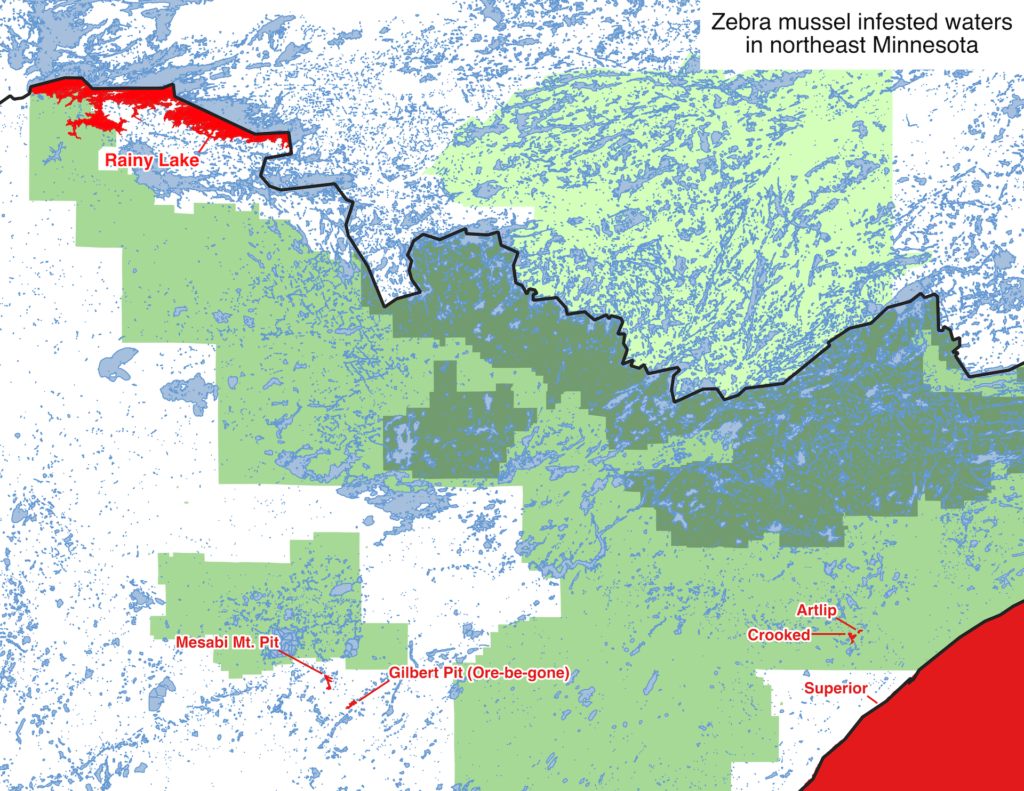Non-native invasive mussels have been found in Rainy Lake on the Minnesota-Ontario border, according to the Minnesota Department of Natural Resources. A single adult zebra mussel was found last summer, while this July, larvae was discovered. The juveniles indicate a reproducing population is present.

The mussels were found in waters outside Voyageurs National Park, which includes about one-third of the lake. The park has an ongoing monitoring program which could detect future infestations within park boundaries.
Zebra mussels can have several negative impacts on the ecosystem and aquatic recreation, including outcompeting native species for food and habitat, cutting the feet of people swimming, and clogging boat motors and water intake pipes.
Voyageurs Conservancy will continue to provide updates saying, “Since 1981, the NPS has been collecting water samples from Rainy Lake as a part of the co-operative Large Lake Water Quality Monitoring Program. Recent samples have not shown zebra mussel larvae in Voyageurs National Park’s boundaries. However, this larger monitoring effort will be crucial in understanding the spread and severity of zebra mussels throughout the interconnected lakes.”
Zebra mussels arrived in North America in ocean-going ships that traveled between Europe and the Great Lakes. They were first found in Lake St. Clair in 1988, and near Duluth in 1989.
Today, about three percent of Minnesota’s lakes and rivers are infested with the mussels and the number continues to rise. The only way they travel between bodies of water is being carried by humans on boats and other equipment. There are only a few other lakes in northeastern Minnesota that are known to be infested with zebra mussels, including two former iron ore mine pits, and two lakes on the east side of the Superior National Forest.

Boats should always be cleaned, drained, and dried before being moved to other waterbodies. Zebra mussel adults can attach to boats, docks, or other objects. Larvae smaller than visible by the naked eye can travel in bilges, bait buckets, and live wells.
“The shells are typically one-quarter inch to one and one-half inches long, depending on age, with alternating yellow and brownish colored stripes,” the DNR says. “Adults are typically fingernail-sized.” Once zebra mussels are introduced to a body of water, their numbers can grow rapidly. A single female can produce 100,000 to 500,000 eggs per year.
Anyone who suspects a new infestation of an aquatic invasive plant or animal should note the exact location, take a photo or keep the specimen, and contact a Minnesota DNR aquatic invasive species specialist.

More information:
- Zebra mussel larvae confirmed in Rainy Lake in St. Louis County – Minnesota DNR
- Zebra mussel larvae detected in Rainy Lake – Voyageurs Conservancy

